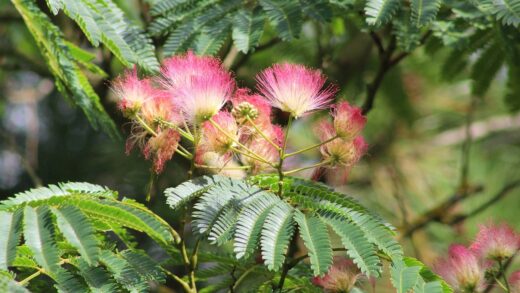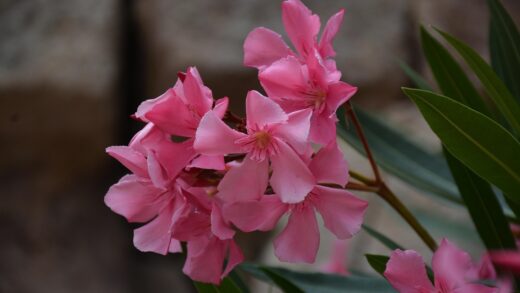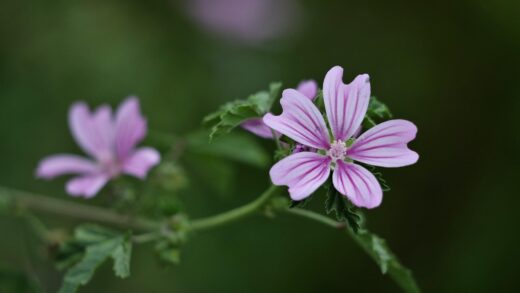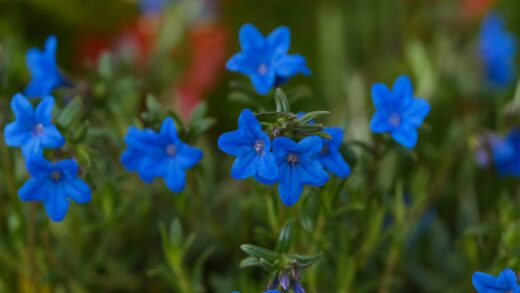The sloe is a native of temperate climates and is perfectly adapted to withstand the rigors of a cold winter. Its annual cycle of shedding its leaves in autumn and entering a state of deep dormancy is a natural survival strategy that allows it to conserve energy and protect itself from freezing temperatures. For a mature, healthy sloe shrub, the winter period requires no special intervention from the gardener. It is inherently equipped with the hardiness needed to endure snow, ice, and frost without any protective coverings or special treatment. This natural resilience makes it an exceptionally easy plant to care for during the coldest months of the year, allowing you to simply let nature take its course.
The process of wintering for the sloe begins in autumn as the days shorten and temperatures drop. The plant responds to these environmental cues by drawing nutrients and energy from its leaves back into the woody structure and root system for storage. This is why the leaves change colour and eventually fall, a process known as senescence. Once the leaves have dropped, the plant enters dormancy, a state of suspended animation where its metabolic activity slows down to a bare minimum. This dormant state is crucial, as it prevents the plant from trying to grow during unfavorable conditions and protects its delicate tissues from frost damage.
While mature plants are entirely self-sufficient, a little extra consideration should be given to sloe shrubs that are very young and have only recently been planted. A plant that has only been in the ground for its first season will not have developed the extensive root system of its mature counterparts and may be slightly more vulnerable to extreme winter conditions, such as deep ground frost or dehydrating winter winds. Simple, non-intrusive measures can be taken to provide these young plants with a little extra security to ensure they come through their first winter in excellent condition.
Winter is not just a time of rest for the plant, but also an opportunity for the gardener. The dormant season is the ideal time to carry out any necessary structural pruning. With the branches bare of leaves, the plant’s framework is clearly visible, making it easy to identify and remove any dead, damaged, or poorly placed branches. This winter maintenance helps to shape the plant for the coming season and ensures that when it breaks dormancy in the spring, it can channel its stored energy into healthy, productive growth.
The natural dormancy process
Dormancy is the sloe’s primary and most effective winter survival mechanism. It is a complex physiological process triggered by the decreasing day length and falling temperatures of autumn. As the plant enters this state, its growth ceases completely. The sap flow is greatly reduced, and the concentration of sugars within the plant cells increases. This higher sugar concentration acts as a natural antifreeze, lowering the freezing point of the water within the cells and preventing the formation of damaging ice crystals. This adaptation is what allows the hardy wood of the sloe to survive temperatures well below freezing without sustaining damage.
More articles on this topic
The visual cue for the onset of dormancy is the shedding of leaves. The leaves are the plant’s primary sites of water loss through transpiration, so dropping them is an essential water conservation strategy for the winter when the ground may be frozen, making it impossible for the roots to absorb moisture. By becoming a bare, woody structure, the sloe minimizes its exposure to cold, drying winds and reduces its overall energy requirements to a level that can be sustained by the reserves stored in its roots and stems. This is why a leafless sloe in the depth of winter is not a sign of death, but a sign of intelligent, energy-efficient survival.
The plant requires a certain period of cold temperatures, known as a chilling requirement, to break this dormancy and resume growth in the spring. This is another protective mechanism that prevents the sloe from being fooled into sprouting too early during a brief warm spell in mid-winter, only to have its tender new growth killed by a subsequent hard frost. The plant effectively ‘counts’ the number of cold hours it experiences. Only once this chilling requirement has been met will it be ready to respond to the warming temperatures of spring by swelling its buds and bursting into flower.
This entire process is automatic and deeply ingrained in the plant’s genetic makeup. As a gardener, there is nothing you need to do to induce or manage this dormancy. The best approach is to simply allow the plant to follow its natural cycle. Refrain from any activities that might disrupt this process, such as applying fertilizer late in the season, which could encourage new growth that would not have time to harden off before the first frosts arrive. Respecting the dormancy period is fundamental to the successful wintering of the sloe.
Preparing young plants for winter
While a mature sloe requires no winter preparation, a plant that has just been through its first growing season can benefit from a few simple measures to help it through its first winter. A young plant’s root system is not yet fully developed, making it slightly more susceptible to the stresses of the cold season. One of the most beneficial things you can do is to apply a thick layer of mulch around the base of the plant in mid-autumn, after the leaves have started to fall but before the first hard frost.
More articles on this topic
This layer of mulch, which can be made of materials like straw, composted bark, or shredded leaves, should be about 10 to 15 centimeters deep. It acts as an insulating blanket for the soil, helping to protect the young, shallow roots from the extremes of temperature fluctuations and deep ground freezes. This insulation helps to maintain a more stable environment for the root system, reducing winter stress. As with all mulching, be sure to leave a small gap directly around the stem of the plant to prevent moisture from being trapped against the bark, which could lead to rot.
Another potential threat to young plants in winter is dehydration caused by cold, dry winds, a phenomenon sometimes referred to as winter scorch. This is a particular risk for evergreen plants, but can also affect the stems and buds of deciduous shrubs like the sloe. If your young plant is in a very exposed, windy location, you might consider creating a temporary windbreak. This can be as simple as inserting a few stakes into the ground on the windward side of the plant and attaching a piece of burlap or horticultural fleece to them. This simple barrier can significantly reduce the desiccating effect of the wind.
Finally, ensure that the young plant goes into the winter well-hydrated. If the autumn has been particularly dry, give the plant a deep, thorough watering a few weeks before the ground is expected to freeze. This ensures that the plant is fully hydrated and that there is ample moisture stored in the soil around its roots. This is far more effective than watering during the winter itself, when the plant is dormant and the ground may be frozen. These simple preparations can make a big difference in how well a young sloe establishes itself after its first winter.
Potential winter damage and solutions
Although the sloe is extremely hardy, there are a few types of physical damage that can occur during the winter months. One common issue, particularly in areas with heavy snowfall, is branch breakage. A sudden, heavy fall of wet snow can accumulate on the branches, and its weight can be enough to snap them. There is little you can do to prevent this, but the solution is straightforward. In late winter or early spring, inspect the shrub for any broken branches and prune them off cleanly, cutting back to a healthy side shoot or the main stem.
Another form of damage can come from small animals. During a harsh winter when other food sources are scarce, rodents like voles and mice may gnaw on the bark at the base of young shrubs for sustenance. Rabbits may also browse on the tender tips of branches. This can be a particular problem for young plants. If animal damage is a known issue in your area, placing a protective plastic tree guard or a cylinder of wire mesh around the base of the young sloe in the autumn can be an effective preventative measure. This protection can be removed in the spring once other food sources become available.
In regions with very cold, sunny winters, a condition known as sunscald or frost cracking can sometimes occur on the main stems of young shrubs. This happens when the sun warms the bark on a cold winter’s day, causing the cells to become active, only for them to be rapidly frozen and killed when the sun sets or goes behind a cloud. This can cause the bark to split vertically. While not common on a multi-stemmed shrub like the sloe, it is a possibility. Wrapping the main stem of a very young, vulnerable plant with a commercial tree wrap can prevent this, but it is generally not necessary for sloe.
Should you discover any of these forms of damage during a late winter inspection, the best course of action is almost always corrective pruning. Pruning out damaged wood prevents it from becoming a potential entry point for diseases and encourages the plant to produce new, healthy growth in the spring. The sloe is remarkably resilient and will recover quickly from most forms of minor winter damage.
Winter as a time for opportunity
The winter dormancy period should not be seen merely as a time of inaction in the garden. For the sloe, it is the prime opportunity for undertaking essential maintenance tasks that are best performed when the plant is not in active growth. The most important of these is pruning. With the branches completely bare, you have an unobstructed view of the shrub’s entire structure. This makes it the perfect time to assess its shape and decide where cuts need to be made.
Winter pruning can be done for several reasons. You can perform maintenance pruning to remove any branches that are dead, diseased, or damaged. It is also the ideal time to thin out the shrub’s structure by removing any crossing or rubbing branches, which helps to improve air circulation and prevent future wounds. If the shrub is becoming too large or overgrown, winter is the time to carry out renovation or rejuvenation pruning, cutting it back hard to encourage a flush of new growth from the base in the spring.
The dormant season is also the best time to manage the sloe’s suckering habit. If you want to control the spread of your sloe and prevent it from forming a thicket, winter is a good time to go through and remove any unwanted root suckers that have emerged. Because the ground is often softer and less compacted during the winter (provided it is not frozen), it can be easier to dig down and sever the connection to the parent plant, removing the sucker along with a portion of its root.
Finally, winter is an excellent time for planning. Observe the bare form of your sloe in the landscape. Consider its position relative to other plants and structures. Are you happy with its size and shape? Does it need to be thinned to allow more light to reach plants growing behind it? By taking the time to observe and plan during the winter months, you can make informed decisions about pruning and management that will set your sloe up for a successful and productive season of growth when spring finally arrives.


















